May the Fourth be With You
Going Beyond Network Effects
Happy Star Wars Day.
As I ready my backpack for my Annual Himalayan trek, I’m preparing to enter a world where the only “network” is made of water streams, and “cloud computing” just means watching actual clouds roll by.
Up here, nothing is in a hurry—not the trails, not the people, and certainly not the pace of life. Meanwhile, down in the flatlands of tech, platforms rise and fall faster than you can say “log in with Google.” One day you’re Skyping long-distance notes, the next you’re digging through spam on a forgotten app.
This week’s newsletter is a tribute to that dizzying pace—where tech trends peak and perish with TikTok timing. As I trek through timeless landscapes that couldn’t care less about product-market fit, I’m reminded: maybe slowness isn’t inefficiency. Maybe it’s wisdom.
So here’s to slowing down—unless you’re a startup. In which case, move fast… before the next update deletes you.
May the Force be with you.
DTW
During the Week, I was in Dehradun as a resource person for the Faculty Development Program on “Integrating Technology in Business Education” held at ICFAI University, Dehradun, on 30 April–1 May 2025.
I was delighted to lead two sessions—Digital Capabilities Across Functions & Curricular Models and Pedagogies. These experience sharing sessions were based on my work at the Centre of Excellence for Digital Transformation and past few years of experience in interdisciplinary teaching and programme design related to Managing Platform Businesses & Managing Digital Transformation . I focused on how the rapidly evolving digital landscape is reshaping industries, business models, and career trajectories. Through frameworks, case illustrations, and breakout discussions, I invited participants to reflect on institutional readiness and rethink curriculum design, assessment models, and industry engagement.
The sessions were met with an enthusiastic response from participants and institutional leadership. Faculty members engaged with energy and openness, bringing in thoughtful questions and ideas from their own contexts. The breakout group work—especially around course redesign and co-curricular interventions—sparked lively debate and collaborative ideation.
It was encouraging to see faculty across disciplines begin to visualise actionable pathways for integrating digital economy competencies into business education. The leadership at ICFAI Dehradun was gracious and deeply committed to driving change, making the FDP an energising and hopeful space for meaningful academic innovation.
My sincere thanks to the organisers—Dr. Rishi Dwesar, Dr. Sanjeev Malaviya, and Ms. Shailee Parmar—for curating a timely and thoughtful programme. I’m especially grateful to the leadership, including Prof. (Dr.) Ram Karan Singh and Registrar, Dr. Ramesh Chand Ramola, for their unwavering support and vision. The warm hospitality and intellectual vibrancy of the ICFAI Business School faculty made this a deeply rewarding experience.
As we concluded with an engaging panel discussion moderated by Dr. Sanjeev Malviya on “Preparing for the Future – AI, Ethics, and Lifelong Learning,” one theme rings loud and clear: the pace of technological change is relentless, and it is reshaping the business world in ways we could barely imagine a decade ago.
Artificial Intelligence is not just a tool but a force multiplier—redefining roles, augmenting decision-making, and disrupting traditional business models. The ethical dimensions of these shifts demand continuous scrutiny and critical reflection. In parallel, the notion of a static career is obsolete. Lifelong learning is no longer optional—it is the essential mindset for thriving in uncertainty. For educators and institutions, the challenge is to not only adapt but to lead this change by embedding agility, critical thinking, and human-centric values into our teaching and systems. This future is already arriving—and how we prepare for it will define our collective relevance and resilience.
Talking about rapid changes, this week Skype would officially fade into the digital archives—a quiet end for a platform that once defined an era of long-distance conversations and early internet connection. Microsoft’s $8.5 billion acquisition of Skype in 2011 seemed like a masterstroke, leveraging its vast user base and early network effects. But by 2014, Skype had slipped into irrelevance, as cleaner, faster, and better-integrated platforms like FaceTime, WhatsApp, and later Zoom claimed its place.
Skype’s story is a poignant reminder of how fast technology trends now rise and fall. Network effects alone no longer ensure longevity; they must be coupled with relentless innovation and contextual relevance. In a world where platforms peak in years—sometimes months—staying still is the same as falling behind.
Clubhouse soared during the pandemic, offering an exclusive, audio-only social experience that felt fresh and intimate. Silicon Valley elites and global influencers flocked to it, making it the app of the moment in 2020-21. But its lack of content moderation, limited discovery tools, and eventual fatigue with “always-on” conversations led to a swift decline. As Twitter Spaces and Discord integrated similar features, Clubhouse lost its novelty and user base. What seemed like the future of social audio became another cautionary tale of hype cycles and the difficulty of sustaining engagement beyond an initial buzz.
Similarly, launched in 2019, Google Stadia promised to revolutionize gaming with no consoles—just streaming. Backed by Google’s cloud infrastructure, it seemed poised to disrupt the industry. But Stadia struggled with latency issues, a weak game library, and a confusing business model that required users to buy full-price games on a platform they didn’t own. Despite the fanfare, it couldn’t compete with established ecosystems like PlayStation or Xbox. Google shut down Stadia in 2023, underscoring that technological promise alone isn’t enough—product-market fit and a strong content pipeline are equally crucial in consumer tech.
Before TikTok, there was Vine. Launched in 2013 and acquired by Twitter, Vine pioneered short-form video content, giving rise to a generation of creators and meme culture. Its six-second looping videos were endlessly creative and often hilarious. But internal mismanagement, lack of monetization for creators, and competition from Instagram and Snapchat led to its shutdown in 2017. Ironically, the format it introduced became the blueprint for TikTok’s massive success. Vine’s fall illustrates how early-mover advantage and cultural relevance are not enough without investment in ecosystem growth and creator support.
Three India-specific examples of the rise and fall of platforms or technology products in the past decade highlight the precarious nature of technology trends.
Launched in 2012, Hike Messenger was India’s ambitious answer to WhatsApp, offering stickers, offline messaging, and localized features. Backed by major investors like SoftBank, it quickly amassed millions of users. However, WhatsApp’s relentless simplicity and scale proved unbeatable. Hike struggled with retention and pivoted multiple times—from a social messaging app to a “super app” with payments and games. In 2021, it finally shut down its messenger, citing the dominance of global platforms. Hike’s journey shows how even innovation and cultural relevance can falter without sustained network effects and ecosystem lock-in.
I have discussed about Facebook’s Free Basics which was launched in India around 2015 and aimed to provide free internet access to underserved populations. While it gained traction initially, critics argued it violated net neutrality by restricting users to a curated set of websites. Public outcry and a strong campaign by digital rights activists led to TRAI banning differential pricing for data services in 2016, effectively shutting Free Basics down in India. The episode highlighted the fine line between digital inclusion and corporate control, and showcased India’s regulatory resolve to preserve an open internet.
During Covid, I was hooked to TikTok and then it vanished. TikTok’s rise in India was nothing short of explosive—by early 2020, it had over 200 million users, giving voice and fame to creators from small towns and vernacular regions. It democratized content creation like never before. However, in mid-2020, amid rising geopolitical tensions with China, the Indian government banned TikTok along with dozens of other Chinese apps citing national security. The ban left a massive vacuum, which Indian alternatives and Instagram Reels rushed to fill. TikTok’s rise and fall in India illustrates how platform dominance can be upended not just by competition, but also by geopolitics.
Over the last decade, India’s digital economy has been a cauldron of innovation, investment, and intense competition. Other than social media, no other sectors have witnessed this as vividly as payments, e-commerce, and edtech—each marked by spectacular rises, dramatic stumbles, and continuing reinvention.
In digital payments, the story of Paytm is both a poster child of disruption and a case study in overreach. Launched in 2010 as a mobile recharge platform, Paytm capitalized on India’s smartphone explosion and got a massive tailwind during the 2016 demonetization, becoming synonymous with digital wallets. By 2017, it had morphed into a super app, offering everything from gold purchases to flight bookings. However, the entry of UPI (Unified Payments Interface) changed the landscape. Seamless, interoperable, and government-backed, UPI became the new standard. Paytm struggled to hold ground against nimble, UPI-native rivals like Google Pay and PhonePe. Its IPO in 2021, once hailed as historic, was marred by a plummeting stock and investor skepticism. The lesson was clear: platform scale must evolve with user needs and policy shifts, not just branding blitz.
E-commerce followed a similarly dramatic arc. Snapdeal, once a serious contender to Flipkart and Amazon, showcased the promise of horizontal e-commerce in a rapidly digitizing India. Riding the wave of growing smartphone usage and aggressive discounts, Snapdeal scaled rapidly around 2014–2016. But a series of missteps—rushed acquisitions, lack of focus on logistics, and failure to differentiate—eroded its value. Flipkart, in contrast, doubled down on category depth, customer experience, and eventually sold a majority stake to Walmart, cementing its lead. Snapdeal faded into the background, attempting a pivot to a “value-focused” platform. Its story underlines how network effects in e-commerce are as much about operational depth and trust as about the number of SKUs.
Then came edtech, which saw its biggest boom during the pandemic. Byju’s rose meteorically as India’s largest edtech player, acquiring companies across geographies and formats—from Aakash Institute to WhiteHat Jr. It became a unicorn and then a decacorn, hailed as a model for India’s global tech ambition. But rapid expansion without integration, mounting losses, and increasing customer dissatisfaction caught up. As schools reopened post-Covid, edtech usage plummeted, and Byju’s found itself battling layoffs, valuation markdowns, and lawsuits. In parallel, smaller players like Vedantu and Unacademy also hit roadblocks. The bust revealed the limits of “growth at all costs” in sectors where trust and outcomes matter deeply.
These stories are not merely about rise and fall; they are about ecosystems evolving faster than individual platforms can adapt. Network effects can accelerate adoption, but without continuous alignment with user value, policy environment, and operational integrity, even the most dominant platforms can falter. India’s digital economy remains one of the most promising in the world—but success here is no longer about first-mover advantage alone. It’s about staying relevant, responsible, and resilient through waves of change.
OTW
Over the Weekend, I traveled to Triguninarayan which would be base for our annual Himalayan Trek. This time we would be attempting Masar & Vasuki Taal and then descending to Kedarnath Temple.
Last weekend, we traveled to Bengaluru to participate in the TCS World 10K on Sunday. This was part of our Procam Slam journey through four events in four different cities.
It was fun to catch up with old and new friends over food and run. Congratulations to Kushagra, Rajitha and Yash on completing the Procam Slam and then hosting us for a great celebration over more food and banter.



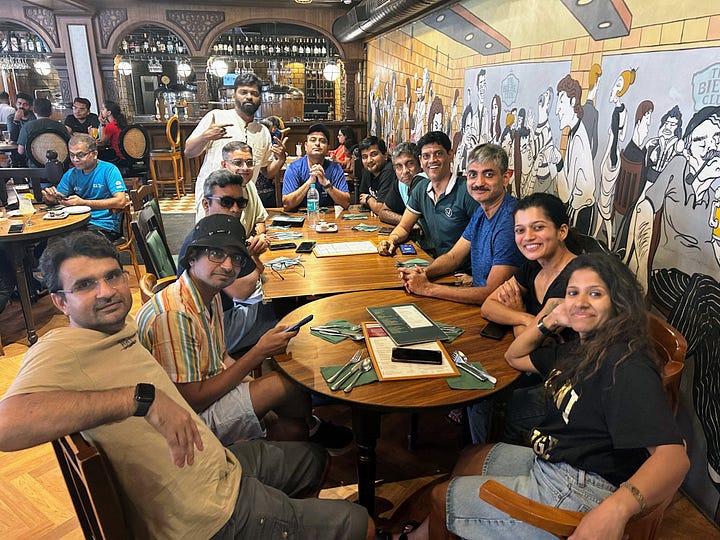
Looking forward to hear about your adventures.
I Love You
Shailendra
PS
As usual, this newsletter is scheduled to post on Sunday Night as I would be in an area with “No Network” till about 10th May 2025. Apologies in advance for delayed response in this week.
Hope to see you soon.


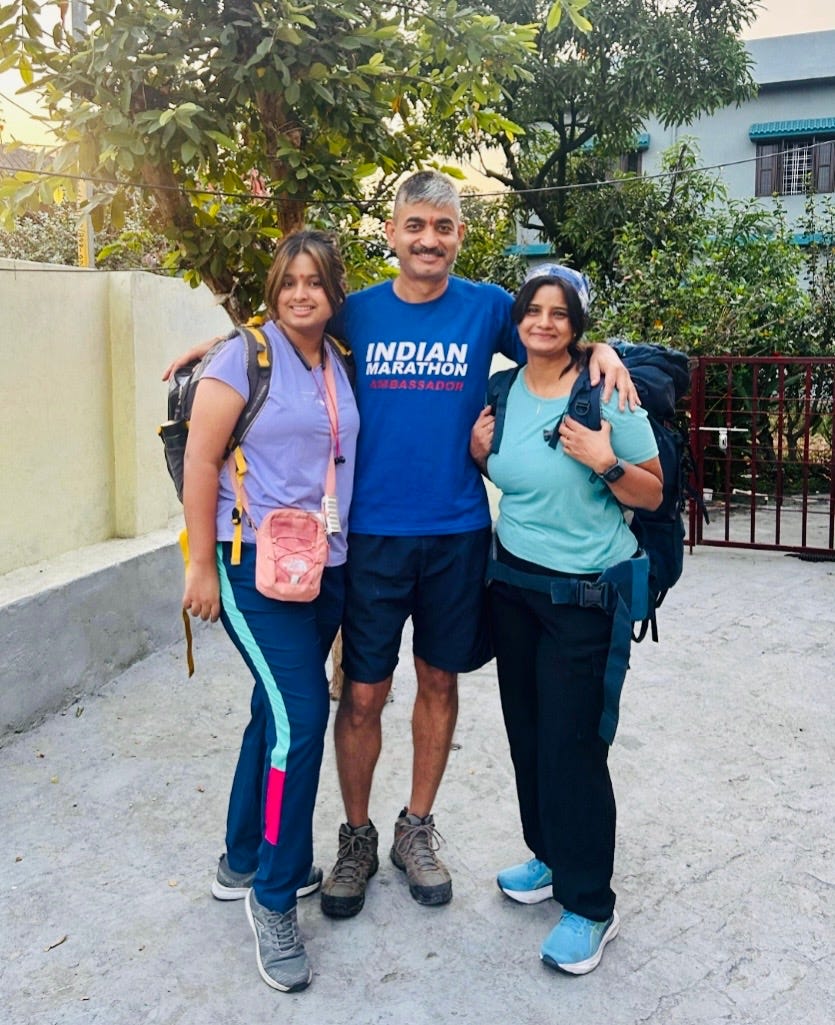

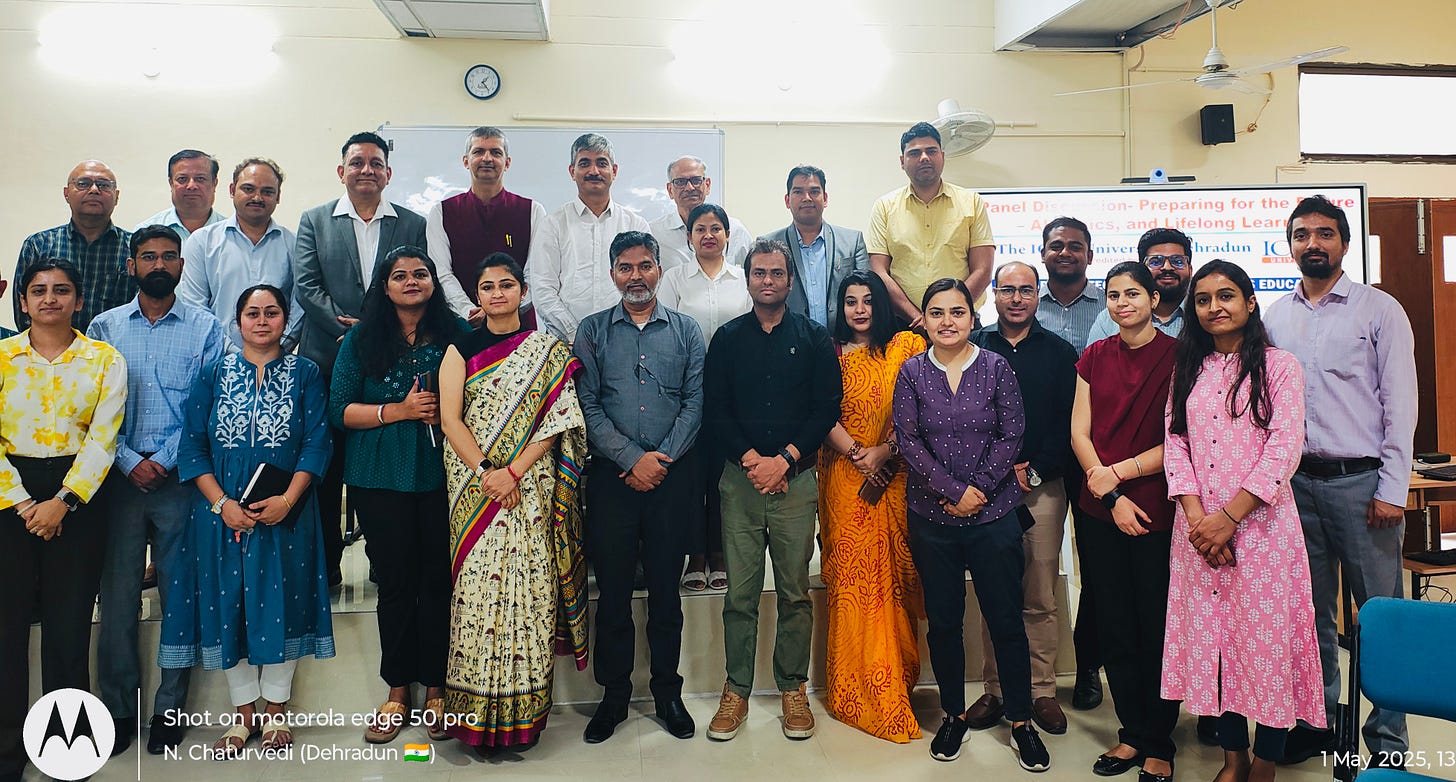
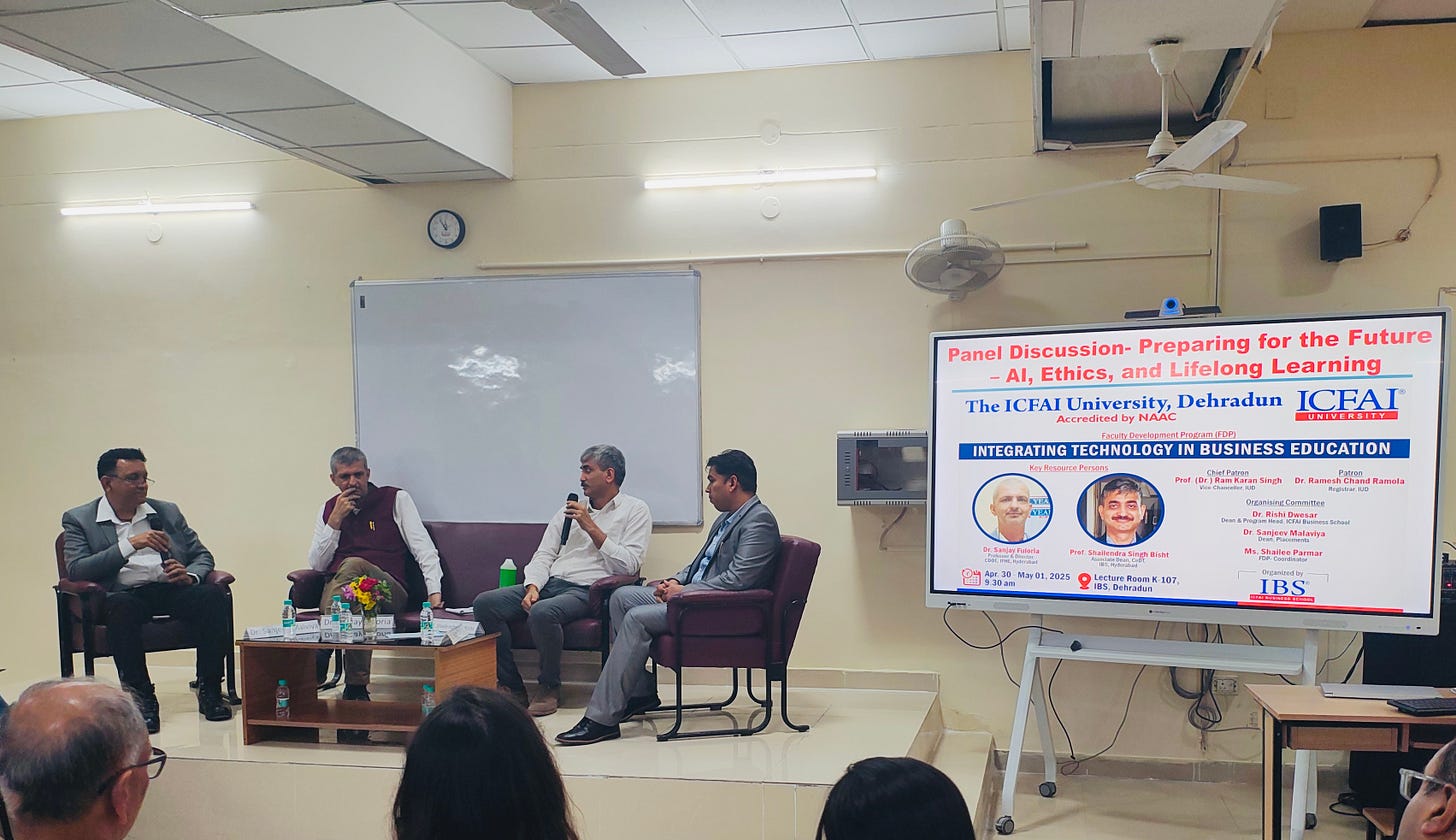
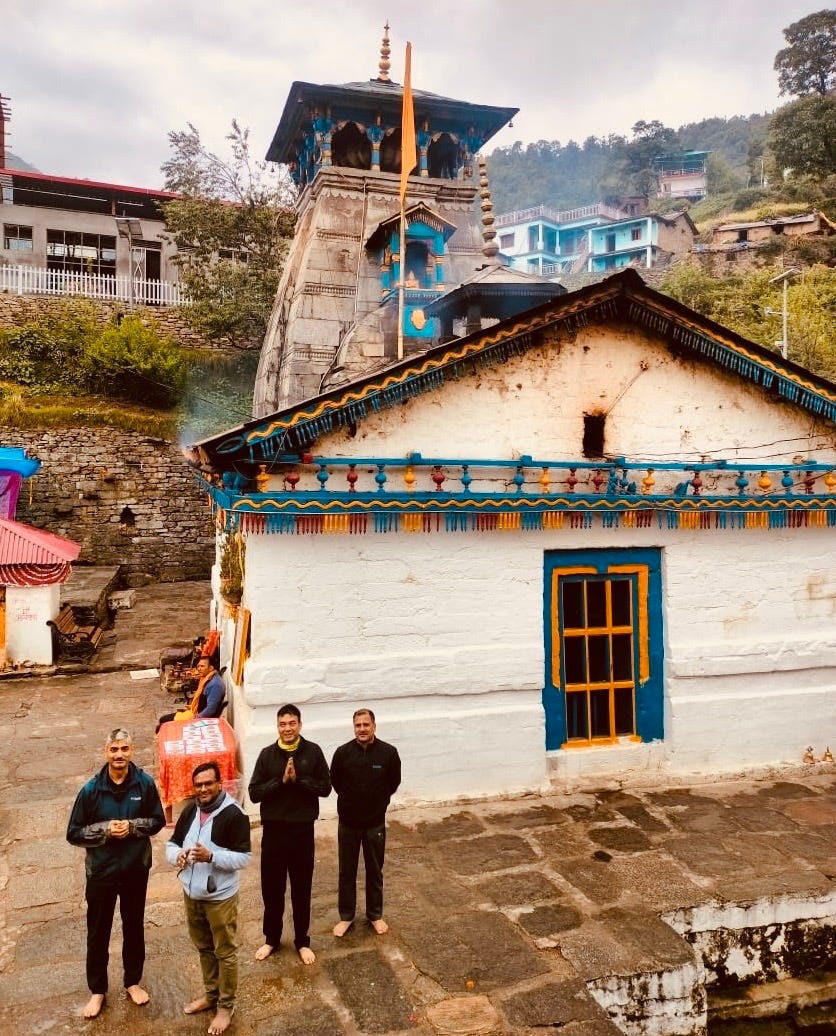

Very nicely narrative. Great read over the weekend. Thanks for writing